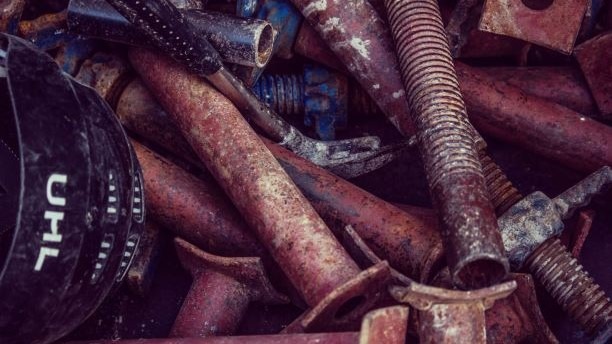Corrosion is the deterioration of a metal due to an electrochemical reaction between the atoms on the metal’s surface and its surrounding environment. Most commonly, corrosion refers to oxidation: the process where a metal reacts to the oxygen in air or water. The most familiar example of corrosion is iron oxide (rust), but other metals can corrode in similar ways. Given sufficient time and exposure, corrosion will have a significant negative impact on the metal’s appearance, strength, and durability. If left unchecked, corrosion will eventually lead to the weakening or total disintegration of the metal parts. The World Corrosion Organization (WCO) estimates the annual cost of corrosion to be up to $2.5 trillion dollars – and that up to 25% of that damage is entirely preventable.
General Attack Corrosion, also known as Uniform Attack Corrosion, is characterized as the reaction occurring over the exposed surface area of a metal object or structure. This is the most common type of corrosion, leading to the greatest overall destruction of metal by tonnage. However, from a technical standpoint, it is also considered to be the ‘safest’ form of corrosion to encounter. The damage which occurs with general attack corrosion, being fairly uniform and predictable in its progress, means it is the easiest to diagnose and prevent.
How to Prevent Uniform Metal Corrosion
1. Selecting the Right Metal: The four basic types of metals referred to as “corrosion-proof”
Stainless Steel: This alloy contains iron, which easily oxidizes to form rust, and chromium, an element even more reactive to corrosion than iron itself. However, when chromium is added to steel, the corrosion which results then forms a protective layer on the surface of the metal. In contrast, corrosion which occurs on uncoated carbon steel will repeat continuously as the rust forms, wears off, and forms again. Eventually the rusting will lead to the metal’s disintegration. Iron oxide layer on stainless steel will resist further corrosion. This means the layer actually prevents oxygen from reaching the steel underneath. Corrosion-resistant in stainless steel can be further boosted by the addition of other elements in the alloy such as nickel and molybdenum.
Aluminum: Since aluminum alloys contain almost no iron, they are free from rust. The corrosion with this metal is similar to chromium in stainless steel; after the initial corrosion occurs, it creates a surface layer that protects the metal from any further damage. This film of aluminum oxide can be unsightly with dark marks or streaking, but as long as it remains, it will shield the underlying metal.
Brass, Bronze, and Copper: Like aluminum alloy, these metals contain little to no iron. They do react with oxygen – most noticeably with copper, which oxidizes to a distinctive green patina. The oxidized layer helps protect the copper from further corrosion. The other two metals combine copper with other metals, which makes them naturally corrosion-proof: copper and zinc to produce brass, and copper and tin for bronze.
Galvanized Steel: This is carbon steel that is galvanized, or coated, with a thin layer of zinc. Like chromium and copper, zinc is highly reactive to oxygen and will quickly begin to oxidize. This layer of zinc oxide prevents any further corrosion on the galvanized coating. Even more importantly, it acts as a barrier preventing oxygen from reaching the steel. Eventually, the zinc will wear off which will make the carbon steel vulnerable to rust, so this type of metal is not entirely corrosion-proof. However, it will take much longer to rust than untreated carbon steel.
2. Protective Coatings
In addition to galvanized steel, other coatings can be applied as a barrier between the environment and the metal. Painting is one of the most cost-effective ways of preventing corrosion. Powder-coating is another popular option. This involves applying a dry powder to the metal and then heating it to fuse it in an even, smooth film. Both methods work by creating a uniform physical barrier between oxygen and the metal.
3. Monitoring the Environment
Simply put, corrosion is the reaction of the metal with its surrounding environment. So whether the environmental factor is air, water, stresses placed upon the metal itself, or all of the above, regular maintenance and monitoring goes a long way towards preventing or lessening the impact of corrosion. Crevice corrosion, for example, is commonly found in areas where metals overlap each other. This means the metal parts are exposed to varying oxygen concentrations, leading to uneven wear and deterioration. Proper maintenance such as eliminating crevices when found, or ensuring complete drainage in vessels, can help to prevent this corrosion. In harsher environments, replacing parts and fastenings with higher alloys can help preserve the metal’s functionality.
All metals will corrode eventually, but the process does not necessarily need to be a destructive one. By anticipating how and where an item will be used, the choice of metal and its maintenance can prevent corrosion from becoming a serious problem. Corrosion prevention not only helps save equipment and money, but it will also help keep metals safer for the people who use them.

